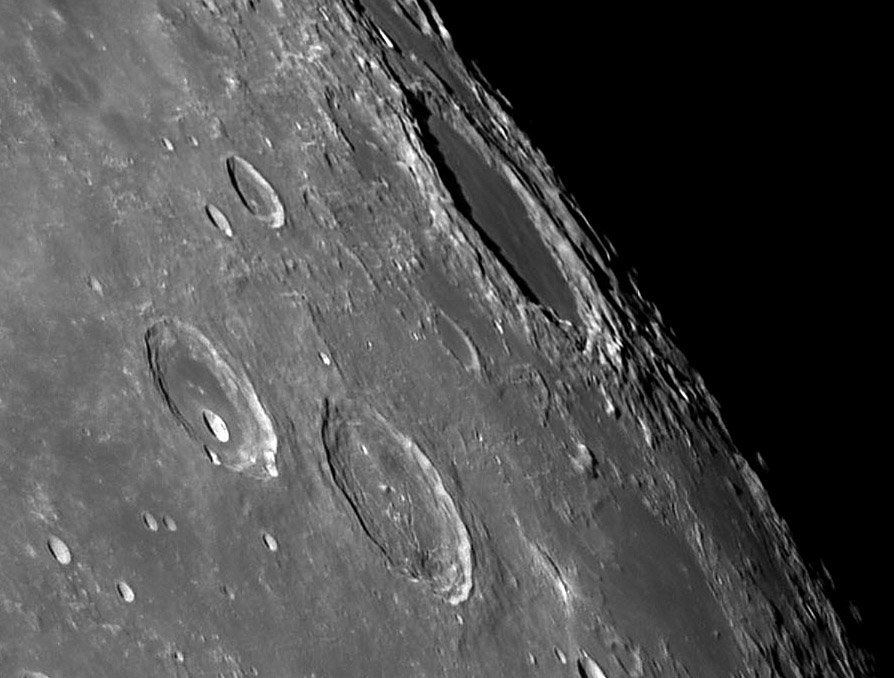September 10, 2009
Oddities

image by " rel="nofollow Sean Walker Manchester, NH.
How many oddities do you see in this image?
The craters, Atlas and Hercules in front and Endymion, the smooth-floored one near the terminator, don't count. Lets start with the obvious - the concentric rilles and dark halo craters that yank Atlas from the classification of normal complex crater into the more exclusive floor-fractured category. What else? Hmm. How about the mare ridge like feature down the middle of Endymion. Does this mean the floor material is lava? Probably - it is dark at " rel="nofollow full Moon. Ok, something else. Notice the small bright spot to the bottom right of Atlas. " rel="nofollow Clementine shows it to be a fresh oblique impact crater with a zone of avoidance (to the bottom right) just like Proclus. Sean's low Sun image reveals that the bright pit is at the south end of a little hill that casts a shadow. There is no sign of the "hill" on Clementine, but there is a dark, unrayed zone, in the same spot. Hmm. One final odd feature - notice the line of bright hills north of Hercules that extends toward Endymion? Is it real, or a chance alignment that our eyes and brains, at least mine, make more out of then is there? Clementine does " rel="nofollow show that there are little ridges and bright spots, but does not answer the question. What is your opinion (backed up by images)?
" rel="nofollow Chuck Wood
Technical Details
Sept 6, 2009. C-14 f/11, DMK21AU04.AS, Baader IR-pass filter; excerpt from a " rel="nofollow mosaic of 12 frames (3:56 and 4:10 UT).
Related Links
Rükl plates 7, 14 & 15
An overhead " rel="nofollow view of Endymion.



